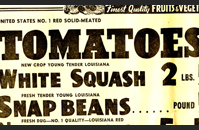LESSON PLAN:
Those Were the Days, My Friend: Comparing Prices and Percentages from WWII
Those were the days, my friend. A loaf of bread cost 9 cents, a new car $920. This sounds great, but what was a dollar really worth? This cross-curricular activity, in which students calculate and discuss price changes over time, combines history, economics, and math. They will find some interesting surprises here.
Objective:
Students will compare prices between 1942 and today by using a percentage formula and then determine the relevant buying power of the dollar over time.
Grade Level: 7-12
Standards:
History Thinking Standard 3—the student engages in historical analysis and interpretation.
Content Era 8 (1929-1945), Standard 3C—the student explains how the United States mobilized its economic and military resources during World War II.
Common Core Math Standards, Standard 7RP.3—the student will use proportional relationships to solve multistep ratio and percent problems.
Time Requirement: One to two class periods.
Download a printable pdf version of this lesson plan
Directions:
1. Pass out the student worksheet and show students the newspaper advertisements from 1942. Have a collection of grocery store advertisements (and access to the internet) available so that students can fill in the Cost today section. If there is not enough time in class for them to research the answers, you can also have the figures ready for students to fill in.
2. Using the included formula, calculate the percentage of increase of each item and fill in the blanks.
3. Discuss why students think some items have risen in price percentage more than others.
4. Ask students to guess what the average annual salary was in 1942 and what it is today. Write the answers on the board: 1942--$1,880 and 2011—$49,000 (est. based on 2010 census).
5. Comparing the price chart numbers, did the dollar go farther in 1942 or does it go farther today? Example: $1,880 a year could buy you 20,888 loaves of bread in 1942 (at 9¢ a loaf), but $49,000 only buys you 16,387 loaves of bread in 2011 (at $2.99 a loaf). Have students make a list of which items were more affordable then and which items are more affordable now. (Here’s a clue: first calculate the percentage of increase in the annual salaries between 1942 and 2011.) Is it different for different types of goods (food, entertainment, durable goods, etc.)? Why?
Assessment:
Components for assessment include the completed worksheet and the class discussion.
Enrichment:
Have students research the costs of these items in different years (1920, 1960, and 1990) and compare them to today’s prices. Students can also research price changes in other countries.
Newspaper Ads from 1942:
Student Worksheet:
Directions: fill in the approximate/average prices for these items today. Calculate the percentage of change from then to now and fill in the blanks.
Formula: (cost today – cost in 1942) = X (100)
cost in 1942

Item |
Cost in 1942 |
Cost Today |
% Change |
|---|---|---|---|
Snap Beans (1 lb.) |
5¢ |
|
% |
Coffee (1 lb.) |
22¢ |
|
% |
Milk (1 qt.) |
13¢ |
|
% |
Candy Bar |
5¢ |
|
% |
Soda |
5¢ |
|
% |
Movie Ticket |
10¢ |
|
% |
Newspaper |
10¢ |
|
% |
Haircut |
50¢ |
|
% |
Postage Stamp |
3¢ |
|
% |
Cat Food (1 can) |
6¢ |
|
% |
Ground Beef (1 lb.) |
25¢ |
|
% |
Avocado |
8¢ |
|
% |
Camera |
$3 |
|
% |
Men's Suit |
$16.95 |
|
% |
New Car |
$920 |
|
% |
House |
$4,000 |
|
% |
Download a printable pdf version of this lesson plan
TAKE ACTION:


EDUCATION PROJECTS:
Student Travel – WWII Educational Tours
High school and college students, learn the leadership principles that helped win WWII on a trip to France or during a weeklong residential program in New Orleans. College credit is available, and space is limited.
See You Next Year! HS Yearbooks from WWII
Collected from across the United States, the words and pictures of these yearbooks present a new opportunity to experience the many challenges, setbacks and triumphs of the war through the eyes of America’s youth.
The Victory Gardens of WWII
Visit the Classroom Victory Garden Project website to learn about food production during WWII, find lesson plans and activities for elementary students, get tips for starting your own garden and try out simple Victory Garden recipes!
The Science and Technology of WWII
Visit our new interactive website to learn about wartime technical and scientific advances that forever changed our world. Incorporates STEM principles to use in the classroom.
Kids Corner: Fun and Games!
Make your own propaganda posters, test your memory, solve puzzles and more! Learn about World War II and have fun at the same time.





